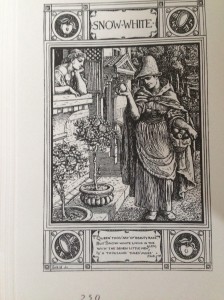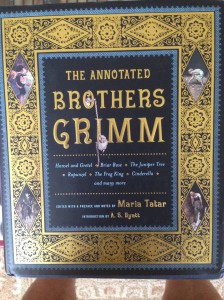One way we manage to keep the spirit of Disney World with us at home, is by reading the original stories that inspired the classic films, both animated and live action. Reading together remains a part of our regular family activities, and reading the original stories of beloved Disney films has been most rewarding. Reading these books has kept the joy of our vacations going strong at home, and has introduced the children to many classics of Western Literature at a tender age.
I studied English and theatre with an emphasis on western dramatic literature (western as in European and American, not cowboys and cattle). From time to time I would encounter professors who were critical of the work of the Walt Disney Studios. Their chief complaint was that when Walt Disney adapts a story he fundamentally sacrifices literature for populist appeal. While I understand their point, I don’t embrace it. Animated film is not literature and a Disney film is not obliged to be a slave to its primary source. Walt Disney took great liberties with stories for populist appeal, but he also transformed them into distinctive works of art frequently with more lasting value than their source. By the way, William Shakespeare did the same thing; it is the nature of creative arts.
When people think of Snow White today, their first thought is of the Disney film. Snow White was first published by the Brothers Grimm in 1812 in their famous book of fairy tales, and this anthology was itself a compendium of folk tales derived from the oral tradition. There is something about Snow White that has historically captured our imagination and before Disney made his landmark film, there were two silent films adapted from Grimms’ Snow White, one released in 1902 and another, which was beloved by Walt Disney himself, in 1916. There was also a sound version in 1933 featuring the cartoon character Betty Boop as Snow White. In 1912 there was a theatrical version produced on Broadway. This production marks the first time the dwarfs were given names: Blick, Flick, Glick, Snick, Plick, Whick, and Quee.
The Disney film was a pioneering technical achievement for animated motion pictures. It is suffused with much artistry and has endured for more than 80 years as the definitive version. So if Walt Disney took liberties with the original story, the extensive artistry of the animation, the brilliant ingenuity in the process, and the compelling storytelling, more than compensates for the dilution of the literature.
There is another important consideration that some scholars and the general public ignore and one that has inspired me to write this post. After you see and presumably enjoy a Disney animated film, that experience is the gateway to further literary exploration. After seeing Snow White and the Seven Dwarfs one is curious about the tale as told by the Brothers Grimm. After seeing Disney’s adaptation of The Jungle Book, one might be inspired to read Kipling’s The Jungle Book. After reading the original story, one might be inspired to read more of Kipling. This holds true for many of the classic Disney films and I invite you and your family to explore these works more deeply. I believe the journey will be rewarding.
-Martin Blanco

An old print from a Brothers Grimm edition of Snow White reprinted in The Annotated Brothers Grimm edited by Maria Tatar.
c. 2015


Looking forward to more, Martin. Way to go!
LikeLike
Great job guys. Although Max will forever mourn Disney’s buying Star Wars.
LikeLike